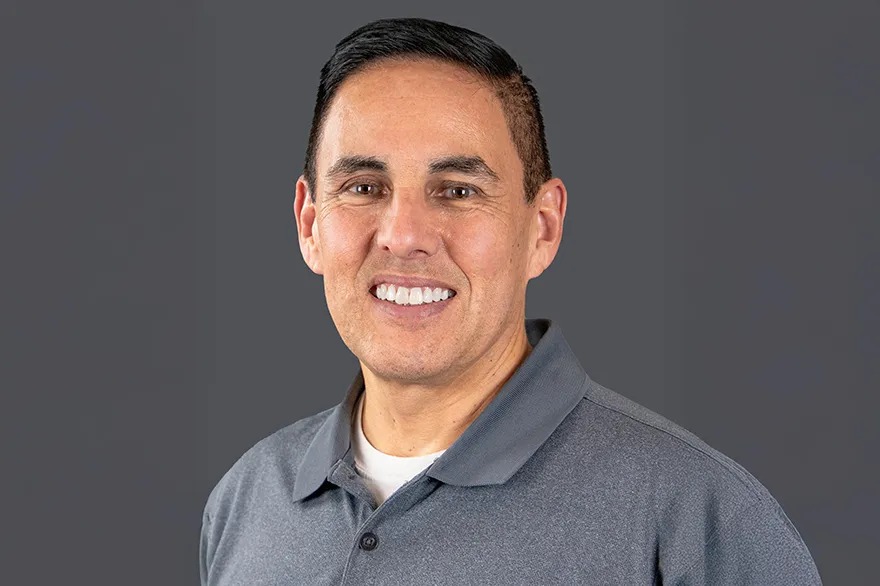Originally published by Toggle on September 18, 2025 (PDF version)
From modernizing data centers during the dot-com era to now spearheading artificial intelligence initiatives at Integrated Real Estate Group, Rey Balderas has always viewed technology not as an endpoint, but as a catalyst for transformation. As director of IT for the Dallas-Fort Worth–based firm, Balderas leads with a people-first philosophy and a robust technical foundation, propelling the company’s evolution from a traditional operation to a nimble, enterprise-grade business.
“We aren’t facing a technology decision—we’re confronting a destiny choice: evolve or accept irrelevance,” Balderas tells Toggle during an interview in July.
Integrated Real Estate Group is a recognized leader in property management, development, construction and senior living lifestyles. Since 1995, the company has developed over $1 billion in real estate projects and earned recognition from the National Association of Home Builders, including the Best of 55+ Independent Living Community Award. Behind these award-winning communities and multifamily developments lies a robust IT infrastructure powering everything from point-of-sale systems to IoT-enabled access controls. At the helm of this digital backbone is Balderas, the architect ensuring it all runs seamlessly.
From tech expert to strategic leader
Balderas’s ascent to IT leadership defied conventional career trajectories. After military service and teaching computing to adults with psychological challenges, he built his technical foundation in disaster recovery and systems resiliency across the government and private sectors. His first management experience came during the dot-com boom, where he orchestrated major transitions like implementing SharePoint, architecting first-generation company websites, and building multi-regional disaster recovery systems.
That period crystallized his ambition to transcend individual technical tasks and embrace people leadership.
“There’s a difference between solving a technical problem and solving an adaptive problem,” he explains. “Most organizations are dealing with adaptive problems—and that’s where leadership becomes essential.”
After relocating to Texas for an opportunity in the Dallas Metroplex, Balderas began navigating IT strategy through corporate mergers and divestitures. These roles honed his ability to lead cross-cultural teams, integrate disparate systems and forge operational resiliency, competencies that would prove vital at Integrated Real Estate Group.
When he joined Integrated Real Estate Group in 2015, it was still metamorphosing from a family-run model to a more structured enterprise.
“They didn’t know what they needed to propel the company forward,” Balderas says. “I brought knowledge and expertise, but I also had to adapt and absorb the company’s DNA. In that fusion of learning and experimentation, you discover the solution and accelerate everything forward.”
The practical promise of AI
Balderas approaches artificial intelligence with calculated pragmatism—neither mesmerized nor intimidated by its potential. To him, it represents the next seismic shift, comparable to the emergence of the internet or the iPhone’s revolution.
“If you don’t integrate AI into your strategic roadmap, you’re choosing obsolescence,” he states. “You either harness it or watch your relevance evaporate.”
That said, he’s orchestrating AI adoption with deliberate precision. AI wields tremendous power but is still in its infancy, and organizations are still deciphering its true implications.
“We pilot select applications, deploy what delivers immediate value, and continuously reassess,” he says.
One pilot tackled a decidedly analog challenge: physical mail sorting.
“We didn’t want someone spending two hours a day scanning mail,” Balderas explains.
His team experimented with bulk scanning and AI-driven data extraction tools to digitally route mail to the correct departments. It’s a modest example, but one that embodies his core philosophy: incremental deployment, relentless evaluation, and transparent communication.
To support this effort, Balderas works with an interdisciplinary AI group that meets regularly to explore potential use cases.
“IT’s role is to ensure the group grasps both the possibilities and the perils,” he says.
This includes safeguarding proprietary data and studying how competitors may—or may not—be leveraging AI responsibly.
He architects solutions with a three- to five-year trajectory, ensuring any system implemented today continues generating value tomorrow.
“Too much change can be disruptive,” he says. “If you operate by just changing and changing, the organization can’t withstand that pace. You never fully realize the efficiency you thought you’d have.”
The human element of cybersecurity
While AI tools proliferate across the technology landscape, Balderas contends the human dimension of cybersecurity has become more vital than ever.
“AI remains decades away from matching human intuition and judgment,” he asserts. “You still need people to detect anomalies that algorithms miss, and to respond with nuanced thinking when threats emerge.”
This philosophy drives his current initiative: transitioning the company to the United Data Technologies-managed CrowdStrike platform, a more unified and adaptive security architecture. Yet even the most sophisticated software cannot prevent breaches without human vigilance and adequately prepared end users.
“We deploy multiple safeguards, but technology and training alone create false security,” he explains. “True protection emerges from their synergistic relationship,” he says.
His team takes a tailored approach to employee education, considering everything from departmental functions to individual learning styles..
“We must understand our audience intimately,” he emphasizes. “Different organizational segments absorb security concepts differently. Generic training programs fail universally.”
Balderas stresses the importance of “bridging upward and downward.” Whether he’s explaining technical needs to executives or coaching a technician, troubleshooting hardware, he continuously translates complex concepts across organizational levels.
“You must connect leadership with ground-level realities,” he reflects. “Effective security requires inter-organizational cooperation and mutual understanding—not just top-down mandates or bottom-up technical solutions.”
Building for the future
At the core of Balderas’s leadership style is a forward-thinking, inclusive vision—harmonizing innovation with sustainability, execution with empathy.
“You never truly arrive at your destination,” he says. “But you can find satisfaction in knowing you’ve skillfully navigated the technological currents.”
He believes that effective leaders cannot merely implement change—they must also cultivate their people’s capacity to embrace it.
“That’s why I take a time-consuming leadership style,” he says. “It’s about investing deeply in people and fostering genuine understanding.”
His team, mirroring the broader trajectory of Integrated Real Estate Group, has expanded substantially in recent years. Yet he warns that growth without proportional IT investment courts disaster.
“Imagine the consequences of starving any critical department, particularly IT, where the impact is far-reaching,” he says.
The same curiosity that once drew him to race cars and moon landings as a child continues to drive him today. With a degree in mathematics from UC Santa Barbara and a master’s in Pastoral Leadership from Huntington University, and over a decade of experience at Integrated Real Estate Group, he leads with seasoned judgment and a steadfast, future-focused vision.
“Innovation has to be practical,” he says. “But if you stop adapting, you fall behind. The key is knowing how to change at the right pace—and ensuring your people are equipped to evolve alongside you.”
Originally published by Toggle on September 18, 2025 (PDF version)











